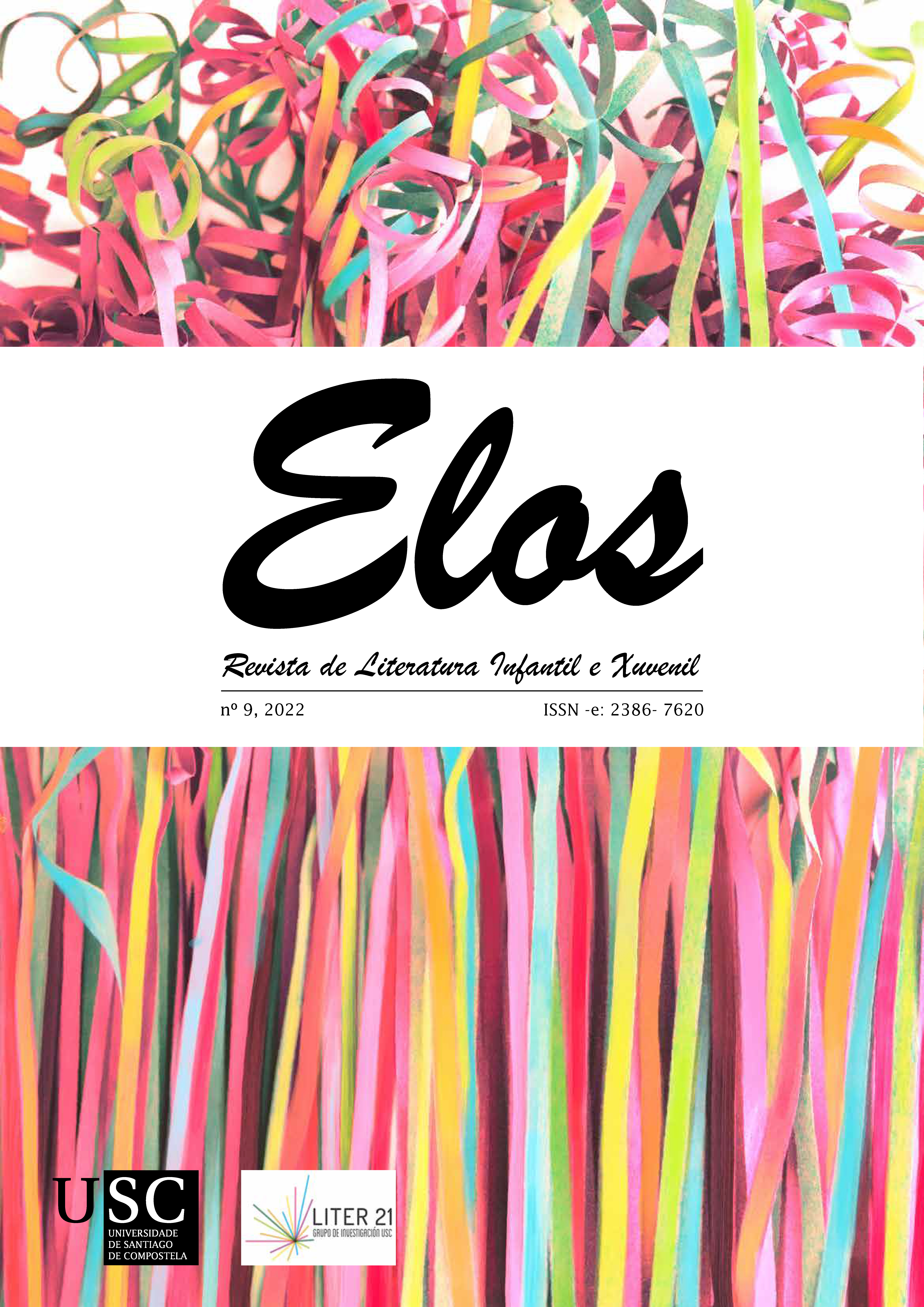Picturebook from two perspectives: a verbal-visual and a receptional analysis of The visit by Antje Damm
Main Article Content
Abstract
This study focuses on the materiality of the picturebook The Visit, by Antje Damm, from two analytical perspectives: from the verbal-visual and the reception of the work among Brazilian readers of different ages, based on reviews written by users of Skoob, a Brazilian social network addressed exclusively to books. The verbo-visual analysis points out that the visual text is not merely descriptive. On the contrary, visuality offers to the reader some powerful keys for reflection, sometimes allowing the images to lead the production of meanings. The reception analysis shows that readers notice and highlight the importance and the quality of visuality in the construction of such narrative, as well as expressing this book's ability to evoke emotions of different orders. Readers also point out the power of the work in dialoguing with different age groups, not restricted to the child audience, to whom it was originally intended. The Visit is a picturebook that requires readers of all ages to have a sensitive and competent look, with a special openness to the potential of visuality.
Keywords:
Article Details
References
Camargo, L. (1995). Ilustração do livro infantil. Lê.
Candido, A. (2004). O direito à literatura. Em A. Candido, Vários escritos (pp. 169-191). Duas Cidades / Ouro sobre Azul.
Crouch, M. (1972). The Nesbit Tradition: the children’s novel in England 1945-1970. Benn.
Damm, A. (2015). Der Besuch. Moritz Verlag-GmbH.
Damm, A. (2016). A visita [Trad. Sofia Mariutti]. Companhia das Letrinhas.
Damm, A. (2018). A visita [Trad. Sofia Mariutti]. Claro Enigma.
Damm, A. [@antje.damm] (10 de agosto de 2021). Den BESUCH kann man an vielen verschiedenen Orten lesen. Danke Anja! [Fotografia]. Instagram. https://www.instagram.com/p/CSYTPBpjYJz/
Hunt, P. (2010). Crítica, teoria e literatura infantil [Trad. Cid Knipel]. Cosac Naify.
Itaú Social (5 de outubro de 2020). Programa de incentivo à leitura “Leia para uma Criança” completa 10 anos. Itaú Social. https://www.itausocial.org.br/noticias/programa-leia-para-uma-crianca-celebra-10-anos/
Itaú Social (2 de novembro de 2020). ANTJE DAMM - “Filosofar com crianças é fazer perguntas sem dar respostas”. Itaú Social. https://www.itausocial.org.br/noticias/antje-damm-filosofar-com-criancas-e-fazer-perguntas-sem-dar-respostas/
Larrosa, J. (2007). Literatura, experiência e formação. Em M. V. Costa (Org.), Caminhos Investigativos I: novos olhares na pesquisa em educação. (pp. 129-156). Lamparina.
Lewis, C. S. (1967). Of Other Worlds: Essays and Stories. Em C. S. Lewis, On three ways of writing for children (pp. 22-34). Harcourt, Brace e World.
Linden, S. V. (2011). Para ler o livro ilustrado [Trad. Dorothée de Bruchard]. Cosac Naify.
Nunes, M. F. (2021). Leitura mediada do livro de imagem para o letramento visual e sensível de crianças. Claraboia, 16, 169-185. http://seer.uenp.edu.br/index.php/claraboia/article/view/1905/pdf
Ramos, F. B., e Nunes, M. F. (2013). Efeitos da ilustração do livro de literatura infantil no processo de leitura. Educação em Revista, 48, 251-263. https://doi.org/10.1590/S0104-40602013000200015
Ramos, F. B., e Paiva, A. P. (2014). Dimensão não verbal no livro literário para crianças. Revista Contrapontos - Eletrônica, 14 (3), 425-447. https://doi.org/10.14210/contrapontos.v14n3.p425-447
Ramos, F. B., e Panozzo, N. S. P. (2005). Acesso a embalagem do livro infantil. Perspectiva, 23 (1), 115-130. https://doi.org/10.5007/%25x
Ramos, G. (2020). A imagem nos livros infantis: caminhos para ler o texto visual. Autêntica.
Sipe, L. R. (2008). Storytime: young children's literary understanding in the classroom. Teachers College Press.
Todorov, T. (2020). A literatura em perigo [Trad. Caio Meira]. DIFEL.







